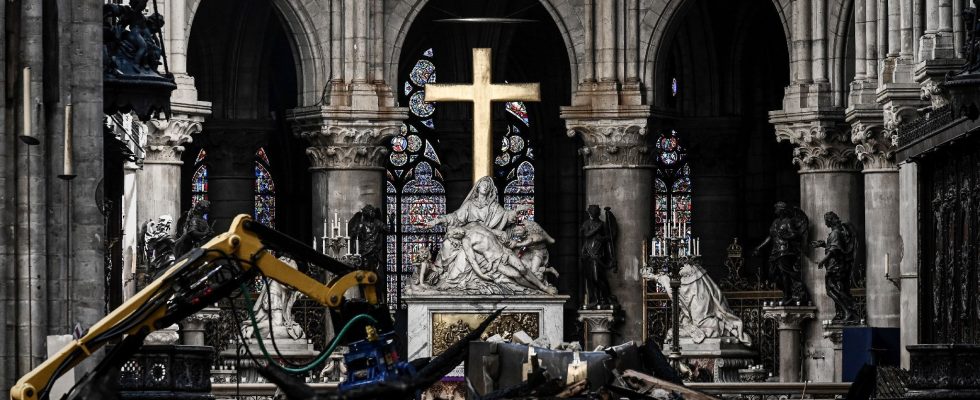Four years after the terrible fire that devastated Notre-Dame, more than a hundred businesses and art workshops are active today in a tangle of scaffolding. At the heart of this hive, striving towards the objective of returning the emblematic monument to the public in December 2024, an Italian company stands out from the crowd. By its technology, whose initial use had nothing to do with the restoration of vaults and masonry.
An alternative to chemical solvents
El. (for Electronic Engineering) is one of the world leaders in the design of lasers used in industry, medicine and, therefore, heritage preservation. The laser is a precise, selective technique, which allows layers of dirt to be removed without touching the epidermis of the stone, and without producing waste. An effective alternative to chemical solvents and microsanding usually used on historic monument sites.
The choice of the Infinito laser to restore its luster to the Parisian cathedral offers a double advantage: cleaning the lead deposits that have flowed onto the walls but also bringing to the surface certain traces of polychromy which had never been seen until now, masked by centuries of dust. “The French are ahead in this area: they are less resistant to new things than the Italians,” notes Paolo Salvadeo, the general director of El. En. Above all, they have recognized our indisputable know-how. Our lasers have already been used to restore 35 UNESCO world heritage sites and several thousand iconic monuments around the world, from the Tower of Pisa to the Brandenburg Gate in Berlin, including the Parthenon in Athens, but also the frescoes of the villa of mysteries in Pompeii, the Hall of Mirrors in Versailles and the Sainte-Chapelle in Paris. We operate on stone but also on fabrics, such as the cloak of Mohammed, the third most important relic of Islam kept at the Palace Topkapi from Istanbul, or even paintings by Leonardo da Vinci.”
Founded in Florence in 1981, and listed on the Milan Stock Exchange since 2000, El. En. is “a story worthy of Californian start-ups. Except that it takes place in Tuscany”, continues the CEO, evoking the kitchen of Leonardo Masotti’s apartment in which this professor of electronic engineering laid the foundations of the undertaken with its most brilliant student, Gabriele Clementi, today president of El. In. Families from Florence, and from the neighboring town of Prato, provided the first funds at the time. The company first specializes in the industrial sector with precision devices for product marking, engraving, material cutting, and even denim washing. The laser is then extended to the medical field for surgical interventions, cancer treatment but also aesthetic medicine, from hair removal to acne treatment, including all kinds of cosmetic applications.
First test at the Doge’s Palace
In 1989, John Fredrich Asmus, an American physics researcher, developed a laser to remove the ravages of time or pollution from works of art. He traveled across Europe by car and stopped in Venice where he met an architect who had worked with El. En. His invention was successfully tested in the early 1990s on the monumental Porta della Carta (Paper Gate) of the Doge’s Palace, opening up those of cultural goods to the Florentine SME.
Prosperous, the group should approach 800 million euros in turnover next year, 80% of which is international. It now has 2,200 employees, spread across five production sites in Italy, one in Germany and three in China where strong demand from the steel industry has boosted growth in 2022 (+ 20%). “Thanks to our eight Research and Development centers, we remain at the forefront of innovation,” says Paolo Salvadeo. “We are currently carrying out tests with teams from the ISS, the international space station, to treating astronauts’ cuts in the absence of gravity. Without forgetting our philanthropic activities.” El. provided free devices to treat the injured in the explosion that blew up the port of Beirut on August 4, 2020. It also provides South American associations which allow women kidnapped and tattooed by drug traffickers to erase the marks inflicted on their skin by their torturers. A range of targets on which the Italian laser hits the mark.
